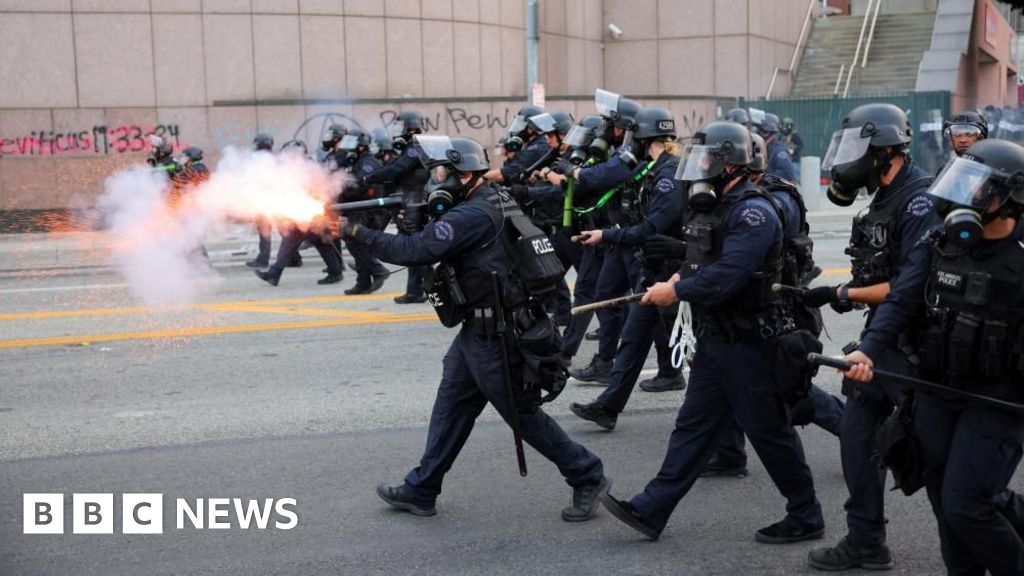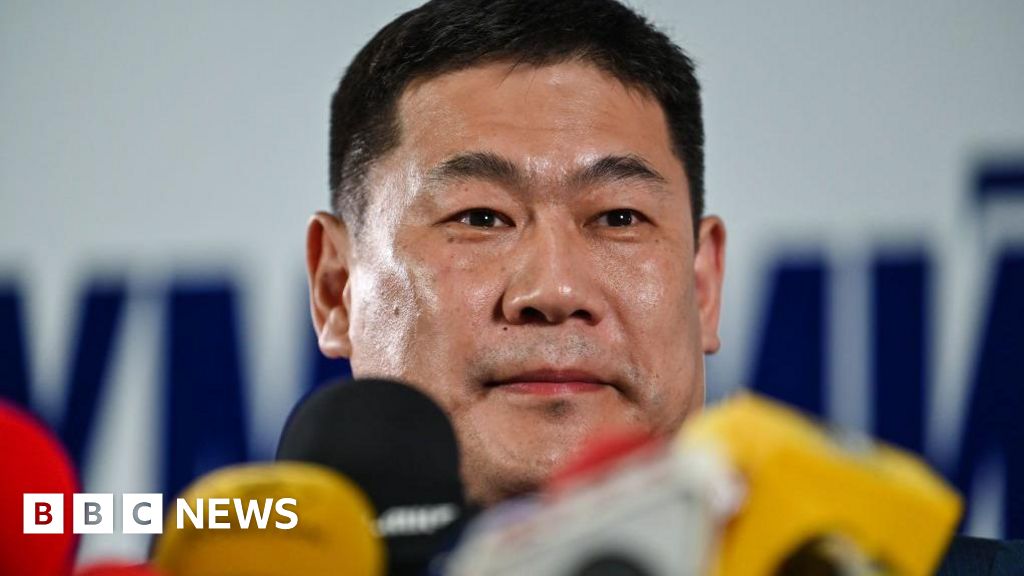ARTICLE AD BOX
President Trump is on a mission to reshape and reduce the federal workforce.
He’s fired dozens of officials, offered a buyout to millions of employees, and told workers to get back to the office or face termination.
The moves, carried out through executive orders, fulfill Mr. Trump’s campaign promise to dismantle the federal bureaucracy that he says thwarted his first-term agenda. But the administration has not spelled out the legal groundwork to support advisers’ belief that Mr. Trump has nearly unlimited power over civil servants.
Opponents have responded with a flurry of legal challenges, but that’s exactly what the Trump team is counting on. By issuing legally vague executive orders, Mr. Trump can bypass the slow, compromise-laden legislative process and gamble that the judicial branch will expand his authority.
Carl Tobias, a constitutional law professor at the University of Richmond, said there’s no downside to Mr. Trump rolling the dice and trying to cement his authority through the courts.
“He gets the political benefit until the courts say, ’no,’” Mr. Tobias said. “He scores political points with [his] base and if he’s successful, he’s expanded his executive authority. It’s a low-risk activity.”
The strategy is similar to President Biden’s sweeping proposal for student debt relief for tens of millions of Americans. Mr. Biden also tried to use untested executive authority to cancel student loans until the Supreme Court declared it unconstitutional. He then went back to the drawing board to look for avenues that skirted the court’s ruling.
Even if Mr. Trump racks up legal losses on the district court level, he may have an ace in the hole at the Supreme Court, where a majority of justices have been appointed by Republican presidents — three of them by Mr. Trump.
In recent years, the Supreme Court has issued decisions that favor expanding presidential authority. The court has granted presidents far-reaching immunity from criminal prosecution, struck down a law that protected the director of the Consumer Financial Protection Bureau from being fired by the president and declared that Mr. Trump’s threat to fire his acting attorney general in 2020 could not be viewed as evidence in a criminal case.
“The courts have become the quickest way to get certain policy changes done. They are a quicker route than Congress and presidents feel they have a better chance when more judges on the court are appointed by their party. Presidents are more emboldened if they think they are going to get a favorable ruling,” said Ben Kantack, who teaches political science at Lycoming College in Pennsylvania.
In this legal environment, Mr. Trump has issued his most controversial orders to cull the federal workforce.
Buyout
Roughly two million government workers have received emails from the administration about “deferred resignation,” in which they were promised eight months’ salary in exchange for their resignations. Under the proposal, employees have until Thursday to decide if they want to participate and can opt in by writing “resign” in reply to the offer email.
The White House estimates that between 5% and 10% of the federal workforce will take the offer, saving the government $100 billion.
Lawmakers are split over whether the president has the authority to make the offer.
Sen. Rand Paul, Kentucky Republican, said the law is on Mr. Trump’s side because “the courts have shown a lot of leeway for the executive on hiring and firing.”
Democrats say the move is unconstitutional because the government is operating on a continuing resolution that expires on March 14 unless Mr. Trump and Congress can agree to a new funding proposal. That means the government is operating on its 2024 budget, so workers’ salaries haven’t been appropriated by Congress.
It could mean that Mr. Trump will run afoul of a law that bars the president from spending money on things Congress has yet to approve.
“The president has no authority to make that offer. There’s no budget line item to pay people who [are] not showing up for work,” said Sen. Tim Kaine, Virginia Democrat.
Legal experts are also split on the deal.
Greg Rinckey, founding partner at Tully Rinckey, a firm that represents federal workers, said the action falls within Mr. Trump’s purview as head of the executive branch.
“The money is appropriated because the workers are already hired,” he said. “He has the authority to draw down and that’s what he’s doing. He’s drawing down the federal workforce.”
Mr. Katnack said the situation is more complicated.
“The president is promising money that hasn’t been appropriated yet. What if the amount of money needed to pay those buyouts might be more than allocated for the salaries in general?” he said.
Several federal worker unions have already advised workers against taking the buyout and have threatened lawsuits.
Firings
Mr. Trump has fired 18 inspectors general, defying a law that requires presidents to give Congress a written notice with a “substantive rationale” within 30 days of taking action before firing the officials, who serve as the watchdogs for federal agencies.
The move sparked a bipartisan rebuke. Senate Judiciary Committee Chairman Charles E. Grassley, Iowa Republican, and ranking member Dick Durbin, Illinois Democrat, sent Mr. Trump a letter demanding an explanation for why he ignored the law.
“While the I.G.s aren’t immune from committing acts requiring their removal and they can be removed by the president, the law must be followed,” the letter read.
Several of the inspectors general have hinted at a lawsuit, but if they lose in court, it would give the Trump administration an opening to knock out the statute laying out the requirements for firing them.
Mr. Kantack said the requirements are clear when it comes to firing inspectors general.
“This is the clearest violation of congressional intent of all the things Trump has done,” he said. “The notification requirements are cut and dry and there isn’t much debate about it.”
Days after Mr. Trump terminated the inspectors general, he took an axe to the National Labor Relations Board, the Privacy and Civil Liberties Oversight Board and the Equal Employment Opportunity Commission by firing the Democrat members of each board. It also left the boards without enough members to take action.
Gwynne Wilcox, who was ousted from the National Labor Relations Board, called the move “unprecedented” and “illegal.” She vowed to “pursue all legal avenues to challenge it.”
The labor board is independent of the White House, which may restrict the president’s ability to clean house.
Under the law creating the board, a president can fire members at will like any other political appointee. But it also says the removal can only happen after a hearing in which it’s determined the official committed “neglect of duty or malfeasance in office.” Members cannot be fired for any other cause.
Ms. WIlcox did not receive a hearing and has not been accused of any misconduct. If her firing goes to court, the legal fight will be over whether the restrictions to fire board members are constitutional.
White House press secretary Karoline Leavitt said the president’s power allows him to fire anyone in the executive branch.
“We will win in court,” she said about potential legal challenges from fired officials.
Return to work
Mr. Trump has ordered federal workers to return to their offices full-time or face termination, seeking to end lenient pandemic-era telework policies. However, some of the unions representing federal workers have argued that the mandate violates contractual agreements they’ve negotiated and ratified.
Mr. Trump has responded that his administration will “be in court to stop” those agreements.
So far, two unions representing federal workers have filed lawsuits to block the directive, which requires tens of thousands of government employees to return to their offices immediately. While the lawsuits are being hashed out, the unions are advising workers to follow the order but defend their rights if they feel it conflicts with collective bargaining agreements.

 4 months ago
99
4 months ago
99








 English (US) ·
English (US) ·